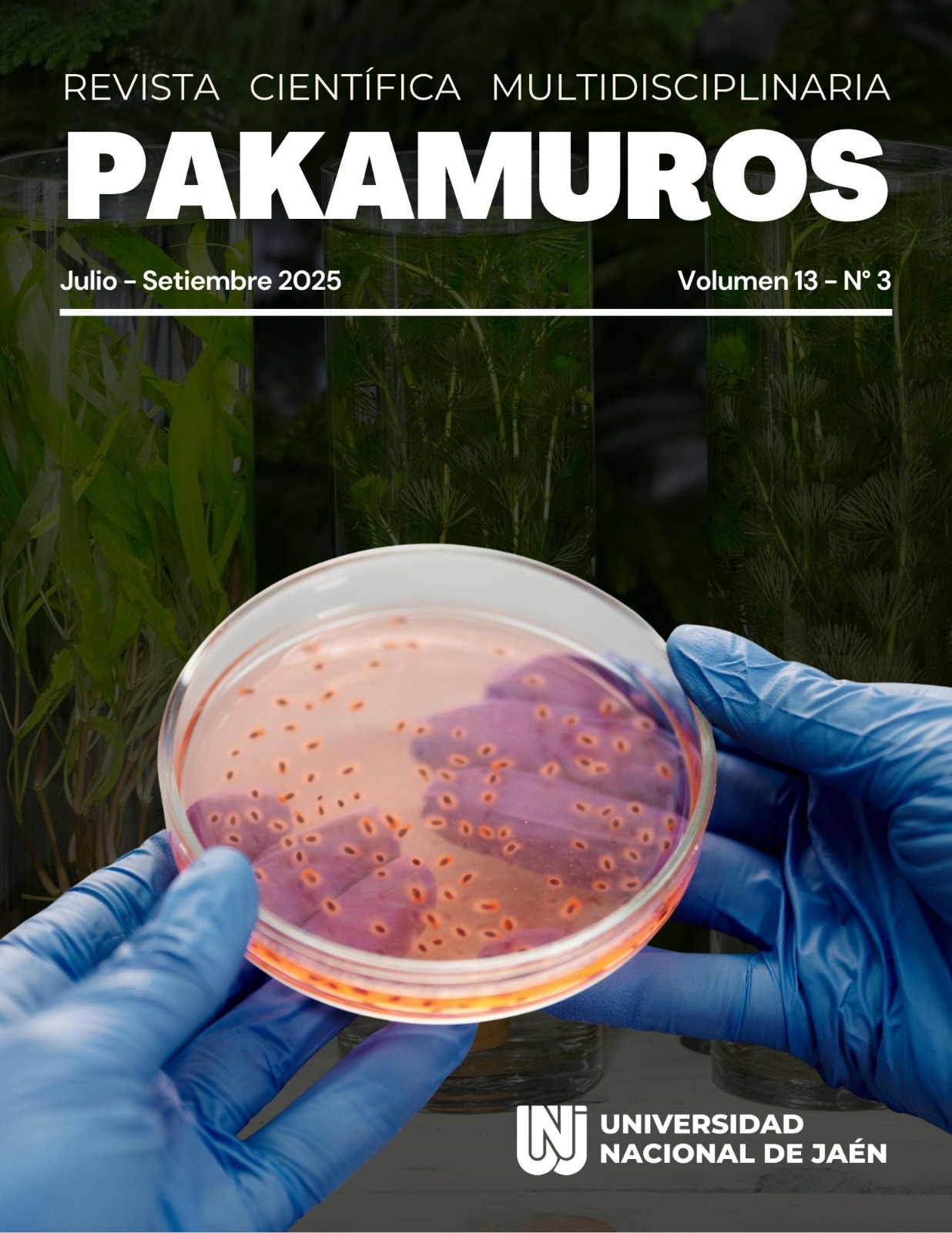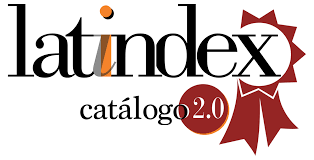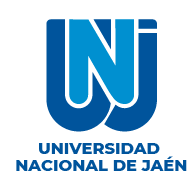Efecto de la adición de cáscara de manzana deshidratada en polvo (Malus domestica, ´Red Delicious´) y la temperatura de almacenamiento sobre las propiedades reológicas del yogurt bebible
DOI:
https://doi.org/10.37787/46wym566Palabras clave:
yogurt bebible, fibra dietética, propiedades reológicas, índice de consistencia, índice de comportamiento de flujo, límite elásticoResumen
Este estudio evaluó el efecto de la adición de cáscara de manzana deshidratada en polvo (Malus domestica, ´ Red Delicious´) y la temperatura de almacenamiento sobre las propiedades reológicas del yogurt bebible. En la primera fase, se caracterizaron los residuos de manzana deshidratada, encontrando una alta cantidad de fibra insoluble y una buena capacidad de retención de agua. Posteriormente, se elaboró yogurt bebible con tres concentraciones de residuos de manzana (1, 1.5 y 2 % p/p) y se almacenaron a temperaturas de 4, 12 y 20 °C. Se realizaron análisis fisicoquímicos y se determinaron las propiedades reológicas utilizando el modelo de Herschel–Bulkley. Los resultados mostraron que la adición de residuos de manzana deshidratada tuvo un efecto positivo sobre las propiedades reológicas del yogurt bebible (índice de consistencia, índice de comportamiento de flujo y límite elástico), mientras que la temperatura de almacenamiento afectó negativamente. Esto resalta la importancia de optimizar los procesos de almacenamiento para la comercialización de yogures enriquecidos con ingredientes funcionales.
Referencias
Ahmed, J., Barua, S., & Roy, S. (2023). Chapter 12—Rheology and microstructure of yogurt. En J. Ahmed & S. Basu (Eds.), Advances in Food Rheology and Its Applications (Second Edition) (pp. 335-363). Woodhead Publishing. https://doi.org/10.1016/B978-0-12-823983-4.00020-0
Ajila, C. M., & Prasada Rao, U. J. S. (2013). Mango peel dietary fibre: Composition and associated bound phenolics. Journal of Functional Foods, 5(1), 444-450. https://doi.org/10.1016/j.jff.2012.11.017
Dong, R., Liao, W., Xie, J., Chen, Y., Peng, G., Xie, J., Sun, N., Liu, S., Yu, C., & Yu, Q. (2022a). Enrichment of yogurt with carrot soluble dietary fiber prepared by three physical modified treatments: Microstructure, rheology and storage stability. Innovative Food Science & Emerging Technologies, 75, 102901. https://doi.org/10.1016/j.ifset.2021.102901
Jakubowska, M., & Karamucki, T. (2020). The effect of storage time and temperature on the quality of natural yoghurt. Acta Scientiarum Polonorum Zootechnica, 18(4), 29-38.
Kauser, S., Murtaza, M. A., Hussain, A., Imran, M., Kabir, K., Najam, A., An, Q. U., Akram, S., Fatima, H., Batool, S. A., Shehzad, A., & Yaqub, S. (2024). Apple pomace, a bioresource of functional and nutritional components with potential of utilization in different food formulations: A review. Food Chemistry Advances, 4, 100598. https://doi.org/10.1016/j.focha.2023.100598
Macagnan, F. T., Santos, L. R. dos, Roberto, B. S., de Moura, F. A., Bizzani, M., & da Silva, L. P. (2015). Biological properties of apple pomace, orange bagasse and passion fruit peel as alternative sources of dietary fibre. Bioactive Carbohydrates and Dietary Fibre, 6(1), 1-6. https://doi.org/10.1016/j.bcdf.2015.04.001
Meneses-Peralta, J. (2021). Valorización biotecnológica a partir de residuos del proceso de elaboración de Sidra de manzana (Malus domestica). REVISTA DE INNOVACIÓN Y TRANSFERENCIA PRODUCTIVA, 2(2), Article 2. https://doi.org/10.54353/ritp.v2i2.e005
Oraç, A., & Akın, N. (2019). How do different cooling temperatures affect the characteristics of set-type yoghurt gel? International Dairy Journal, 97, 49-56. https://doi.org/10.1016/j.idairyj.2019.06.003
Pascual-Chagman, G. J., & Encina-Zelada, C. R. (2022). Caracterización de las harinas de trigo (Triticum aestivum), y de residuo de naranja (Citrus x aurantium) y de manzana (Malus domestica) para su aplicación en alimentos. Agroindustrial Science, 12(3), Article 3. https://doi.org/10.17268/agroind.sci.2022.03.06
Penna, A. L. B., Converti, A., & de Oliveira, M. N. (2006). Simultaneous Effects of Total Solids Content, Milk Base, Heat Treatment Temperature and Sample Temperature on the Rheological Properties of Plain Stirred Yogurt.
Simultaneous Effects of Total Solids Content, Milk Base, Heat Treatment Popescu, L., Ceșco, T., Gurev, A., Ghendov-Mosanu, A., Sturza, R., & Tarna, R. (2022). Impact of Apple Pomace Powder on the Bioactivity, and the Sensory and Textural Characteristics of Yogurt. Foods, 11(22), Article 22. https://doi.org/10.3390/foods11223565
Ramirez-Santiago, C., Ramos-Solis, L., Lobato-Calleros, C., Peña-Valdivia, C., Vernon-Carter, E. J., & Alvarez-Ramírez, J. (2010). Enrichment of stirred yogurt with soluble dietary fiber from Pachyrhizus erosus L. Urban: Effect on syneresis, microstructure and rheological properties. Journal of Food Engineering, 101(3), 229-235. https://doi.org/10.1016/j.jfoodeng.2010.06.023
Sözeri Atik, D., Öztürk, H. İ., & Akın, N. (2024). Perspectives on the yogurt rheology. International Journal of Biological Macromolecules, 263, 130428. https://doi.org/10.1016/j.ijbiomac.2024.130428
Sun, Y., Roos, Y. H., & Miao, S. (2025). Impacts of high-methoxyl pectin on structure, composition, and rheological properties of milk fat globule emulsion. Food Hydrocolloids, 160, 110717. https://doi.org/10.1016/j.foodhyd.2024.110717
Wang, X., Kristo, E., & LaPointe, G. (2019). The effect of apple pomace on the texture, rheology and microstructure of set type yogurt. Food Hydrocolloids, 91, 83-91. https://doi.org/10.1016/j.foodhyd.2019.01.004
Zang, J., You, H., Li, S., Zhang, Y., Xu, H., Tang, D., Wu, S., Yao, Y., Tu, Y., & Yin, Z. (2023). Interpreting the “twice gelation” mechanism of a novel egg-based yoghurt through the dynamics of rheology, microstructure, and intermolecular forces. Food Bioscience, 56, 103318. https://doi.org/10.1016/j.fbio.2023.103318
Zhou, Z. (2018). Effects of dried apple peel powder on the rheological and sensory properties of drinking yogurt [University of Guelph]. http://hdl.handle.net/10214/12158
Publicado
Número
Sección
Licencia
Derechos de autor 2025 Revista Científica Pakamuros

Esta obra está bajo una licencia internacional Creative Commons Atribución-NoComercial 4.0.












